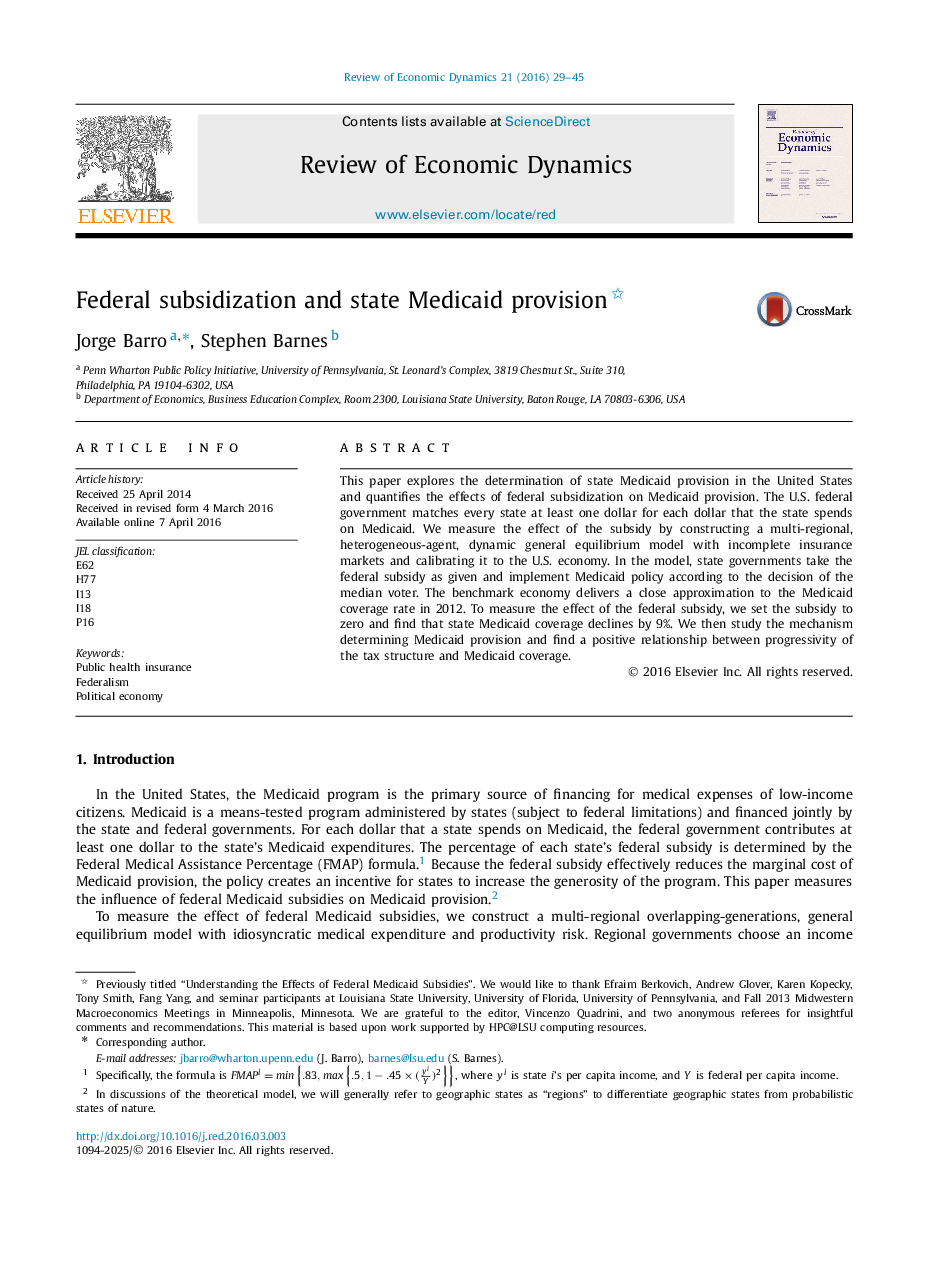| Article ID | Journal | Published Year | Pages | File Type |
|---|---|---|---|---|
| 7388260 | Review of Economic Dynamics | 2016 | 17 Pages |
Abstract
This paper explores the determination of state Medicaid provision in the United States and quantifies the effects of federal subsidization on Medicaid provision. The U.S. federal government matches every state at least one dollar for each dollar that the state spends on Medicaid. We measure the effect of the subsidy by constructing a multi-regional, heterogeneous-agent, dynamic general equilibrium model with incomplete insurance markets and calibrating it to the U.S. economy. In the model, state governments take the federal subsidy as given and implement Medicaid policy according to the decision of the median voter. The benchmark economy delivers a close approximation to the Medicaid coverage rate in 2012. To measure the effect of the federal subsidy, we set the subsidy to zero and find that state Medicaid coverage declines by 9%. We then study the mechanism determining Medicaid provision and find a positive relationship between progressivity of the tax structure and Medicaid coverage.
Related Topics
Social Sciences and Humanities
Economics, Econometrics and Finance
Economics and Econometrics
Authors
Jorge Barro, Stephen Barnes,
